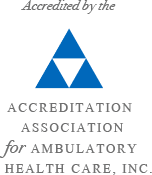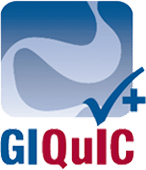What are the Benefits of Esophageal Dilation?
 The sensation of having food stuck in your chest area can be quite frightening and painful. In many cases, the cause of the problem and discomfort is a narrowed esophagus, which can be corrected with a procedure known as an esophageal dilation.
The sensation of having food stuck in your chest area can be quite frightening and painful. In many cases, the cause of the problem and discomfort is a narrowed esophagus, which can be corrected with a procedure known as an esophageal dilation.
In this blog, the experienced gastroenterologists at Gramercy Park Digestive Disease Center (GPDDC) in NYC outline the benefits of an esophageal dilation.
What is esophageal dilation?
This procedure is also known as an esophagus stricture, and it allows your doctor to dilate – meaning to stretch and widen – a narrowed section of your esophagus. Also referred to as a swallowing tube, your esophagus allows food and drink to pass through to your stomach.
When is it performed?
Normally, food and drink pass smoothly from the esophagus to your stomach. However, when your esophagus becomes narrowed, you can have trouble swallowing, which can get worse over time. Food can feel as though it’s stuck in your chest area, which can be uncomfortable and frightening.
Over time, you find yourself eating tiny bites of food and can eventually suffer from dehydration and unintended weight loss.
Common causes of a narrowed esophagus include the following:
- Heartburn and Gastroesophageal reflux disease (GERD) - the most common cause
- Layers of excess tissues that form webs or rings
- Esophageal spasms
- Scarring due to a disorder that affects the way the esophagus moves
- Scarring after radiation treatment
- Damage from a medical procedure
- Esophageal cancer
What is involved?
Esophageal dilation can be done in several different ways, depending on your needs and whether another procedure is being performed at the same time.
In some cases, a series of flexible tubes is inserted into your esophagus to stretch it. In others, your doctor can instead choose to insert a special balloon that’s inflated and removed.
These procedures are relatively simple, and you’ll be seated during them. You’ll receive a spray of anesthetic inside your throat before the procedure starts, and it takes only a few minutes to complete. Afterward, you can eat and drink in a short time.
Your doctor may also choose to perform an upper GI endoscopy (EGD) at the same time you’re having your esophagus dilated. This procedure allows your doctor to use an endoscope (a long, flexible, lighted tube with a tiny camera on the end) in order to check for abnormalities in your esophagus, stomach, and duodenum (the first section of the small intestine). The endoscope won’t interfere with your ability to breathe.
If an EGD is being performed, it’s usually done under sedation, so you’ll need someone to drive you home.
What happens after your procedure?
In some cases, your esophagus can be stretched enough in one procedure. If it needs to be stretched a good bit, however, your doctor may want to perform this gradually over multiple procedures.
If your esophagus was narrowed due to GERD, you may be prescribed acid-reducing medication to help prevent a recurrence.
What are the benefits?
An esophageal dilation has the following benefits:
- Easy, quick recovery
- Can resume eating, drinking, and other activities quickly
- Little discomfort or pain
- Effective at relieving esophageal stricture
- Side effects are usually minimal (such as a sore throat)
- One procedure is usually all that’s needed
If you’ve had difficulty swallowing, make an appointment today with Gramercy Park Digestive Disease Center (GPDDC) in New York City. Our experienced gastroenterology specialists can determine the cause of your symptoms and perform procedures such as an esophageal dilation and EGD to help you get the relief you need.


